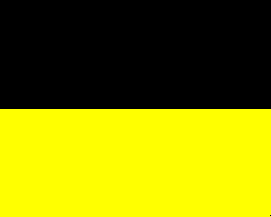


At the beginning of the war, FML Johann Kirchbach was in command of the 8. Infantry Division. He surrendered this to GM Ludwig Fabini in September 1914. Kirchbach in turn replaced GdI Blasius Schemua in the command of the II. Corps. Johann Kirchbach held this position for one year, after which time he was replaced by FML Julis Kaiser. J. H. Verdun's timeline of Kirchbach's career:
1875 attended Military College of St. Polten
1879 graduated Maria Theresa Academy and made lieutenant in the Feldjagers
1885 Oberleutnant
1888 Major
1891 Instructor of tactics at Maria Theresa Academy
1894 Chief of Staff XXV. Inf. Div.
1914 Cdr VIII. Inf. Div.
1914 Cdr II. Corps
1916-1918 Cdr Vienna Garrison
Johann von Kirchbach died in Vienna on 3 October 3 1920.
GWS, 3/02
III. Armee, Gen. d. Kav. Rudolf Ritter von Brudermann
XIV. Korps, Gen. der Infanterrie Erzherzog Josef Ferdinand
VIII. inf. div., Feldmlt. J. von Kirchbach
Orders of Battle: Galician Front, Mid-November 1914
Immediately preceding the battle for Krakau
1. Armee, GdK Viktor Dankl
II. Korps, FML Johann Freiherr v. Kirchbach auf Lauterbach
2. kav. div., FML Emil Ritter v. Ziegler
25. inf. div., FML Erzherzog Peter Ferdinand
4. inf. div., FML Rudolf v. Stöger-Steiner
From the beginning of November, desperate preparations were being made west of Germany’s territory of Upper Silesia. The main enemy was Russia’s III. Caucasian Corps, which pushed to within a few miles of Upper Silesia. The II. Corps blocked the most direct route into the industrial heart of Silesia, and the critical coal mines of Tarnowitz and Rybnik were only 10 miles from the fighting. Furtermore, the three divisions defended a section of the critical Czenstochau-Bendzin railway, which ran parallel to the whole front, and was the most important supply route for the Austrian 1. Army and Army Group Woyrsch. Peter Ferdinand’s forces were centered on the small town of Wlodowice, and Stöger-Steiner defended Kromotów. By the end of the month, the Russians could battle no closer to Silesia and their focus shifted to Krakau, relieving the Czenstochau sector after a full month of fighting.
GWS, 9/04
Orders of Battle: Polish Front, January 1915
I. Armee, Gen. d. Kav. Dankl
II. Korps, Feldmarschalleutnant Johann von Kirchbach
XXV. inf. div., Feldmlt. Erzherzog Peter Ferdinand
IV. inf. div., Feldmlt. Stöger-Steiner von Steinstätten
Orders of Battle: Eastern Front, May 1915
Immediately preceding the Dunajec offensive
I. Armee, Gen. d. Kav. Viktor Dankl
II. Korps, Feldmlt. Johann Frh. v. Kirchbach
Chief of Staff, Oberst Gf. Szeptycki
25. inf. div., Feldmlt. Archduke Peter Ferdinand
49. inf. brig., Genmj. Edl. v. Severus
50. inf. brig., Genmj. Ritt. v. Bolberitz
25. field art. brig., Genmj. v. Jemrich
4. inf. div., Genmj. Anton Bellmond Edl. v. Alderhorst
8. inf. brig., Oberst Mietzl
4. field art. brig., Oberst Machaczek
1. brig. d. poln. Legion: Oberst Josef Pilsudski
Orders of Battle: Volhynian Front, September 1915
I. Armee, Feldz. von Puhallo
II. Korps, Gen. d. Inf. J. von Kirchbach
XXV. inf. div., Genmj. Poleschensky

